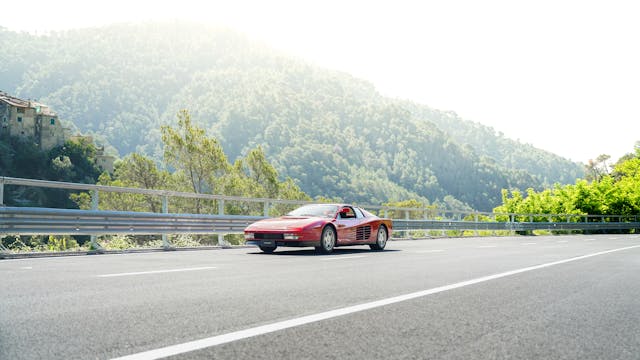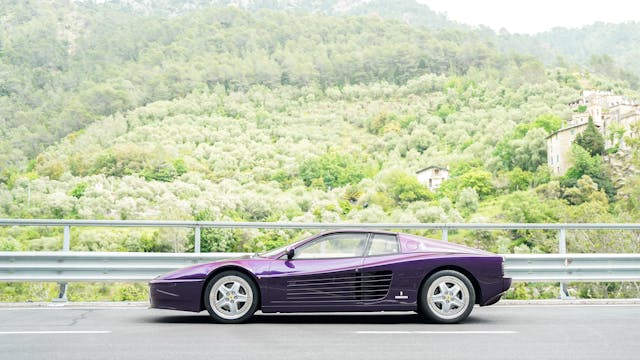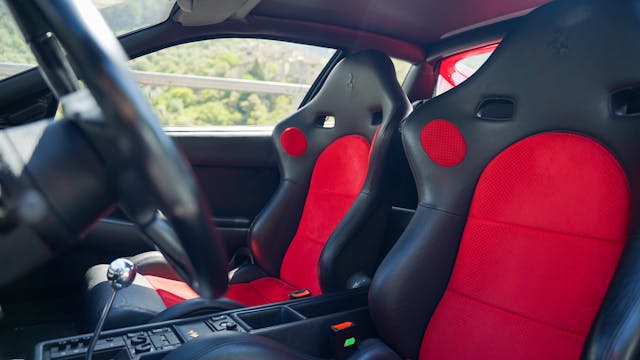Which Ferrari Testarossa Era Reigns Supreme? A Look into the Iconic Trio
Few vehicles encapsulate the spirit of an era quite like the Ferrari Testarossa. Leonardo Fioravanti and his team at Pininfarina crafted a design that not only transcended the world of automotive engineering but also became a social and cultural icon of the 1980s. Those pronounced strakes, reminiscent of early MTV, shoulder pads, and brick-sized cellphones, are forever etched into the collective memory.
A Revolutionary GT for Ferrari
Ferrari purists know that the Testarossa wasn't just a flashy background prop in Miami Vice. It was a monumental leap for Ferrari, with nearly 10,000 units built over three major iterations between 1984 and 1996. This 12-cylinder grand-touring machine embodied Ferrari's evolving ethos over its 12-year production span. The Testarossa’s continued updates and relatively high production volumes mean there is a significant variation in quality, dynamics, and market value from its early models to the last ones.
Collectible Symbolism and Market Value
The Testarossa's cultural significance also plays a critical role for collectors. Many enthusiasts today likely had these cars plastered on their bedroom walls during their formative years. As these enthusiasts now have the means to purchase their childhood dream cars, the values of Testarossas have soared to iconic heights.

Celebrating Four Decades
This year marks the 40th anniversary of the Testarossa. To honor this milestone, Monaco Car Auctions assembled five Testarossas for a Ferrari-exclusive sale. Each model showcased a phase in the car's progression.
The early Monospecchio model, named for its singular high-mounted wing mirror, remained a head-turner, while the slightly later Monodado featured two mirrors and single-bolt wheels introduced in 1987. The final Testarossa-badged version came out in 1988 with five-bolt wheels and standard two mirrors.
The Grand Finale: 512 TR and F512 M
Further mechanical and design enhancements led to the introduction of the 512 TR in 1991 and the ultimate evolution, the F512 M in 1994. The auction house offered one of each, providing a rare opportunity to drive these celebrated models back-to-back. This presented an excellent lens through which to view their evolving legacy and compare their market values.
An unforgettable sight awaited as the three iterations parked side by side under the blazing Italian sun. The original Monospecchio, with its captivating single mirror and distinctive asymmetric design cues, immediately caught the eye. For enthusiasts, it's the aesthetic purity and '80s charm of the original front-end that stands out. The Monodado and '88 Testarossas adopt a '90s design language likened to their stablemates, the 348 and 355, losing some of their period-specific allure.

Behind the Wheel: First Impressions
Driving the 1985 Monospecchio (24,000 km) felt like a journey back in time. The ergonomics are notoriously poor, with the pedals heavily offset and awkwardly positioned speaker. The experience, while physically demanding, warmed my automotive soul. The V12 engine’s mechanical symphony and raw power prove why it was the most potent production sports car engine of its day, generating an impressive 390 hp.
Evolution Continues: The 512 TR
The 1994 512 TR (65,000 km) showcased noticeable refinements that smoothed out many of the original's kinks. Its 428 hp engine, mounted 30 mm lower in the chassis, offered improved handling, quicker steering, lighter clutch, and enhanced brake performance. The difference created a more satisfying driving experience, combining thrilling power with newfound practicality.

The Apex: F512 M
The F512 M (41,000 km) stands as the rarest and most developed of the trio but divides opinions with its ’90s aesthetic shifts, such as fixed headlamps and new rear lights. Performance-wise, it’s a marvel with its 440 hp engine and sophisticated handling improvements. Ferrari built only 501 of these, making it an even more exclusive collectible.

Market Reflections
The actual Monaco Car Auctions sale didn't meet expectations, with only the Monospecchio selling for €150,000. Value trends for the Testarossa family are volatile, with the F512 M currently fetching the highest prices due to its rarity and desirability, sitting at nearly $600,000 for an excellent example.
The Testarossa legacy is ingrained in the hearts of many, and as new generations of car collectors emerge, preferences may shift to favor newer models. Yet, whether it’s the original Monospecchio, the balanced 512 TR, or the refined F512 M, each model offers a unique slice of automotive history worth cherishing.

***
Check out the Hagerty Media homepage so you don’t miss a single story, or better yet, bookmark it. To get our best stories delivered right to your inbox, subscribe to our newsletters.